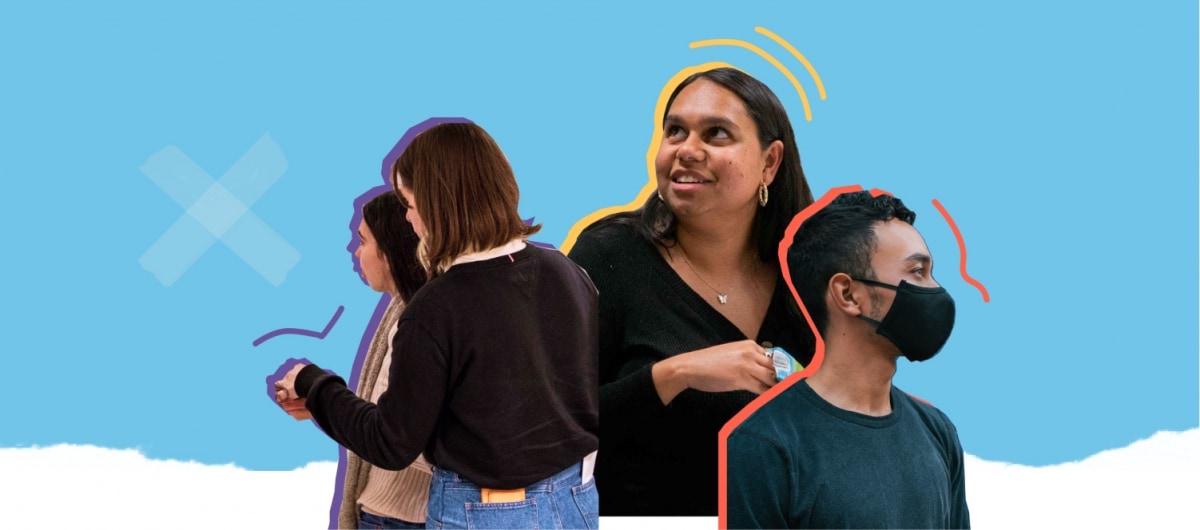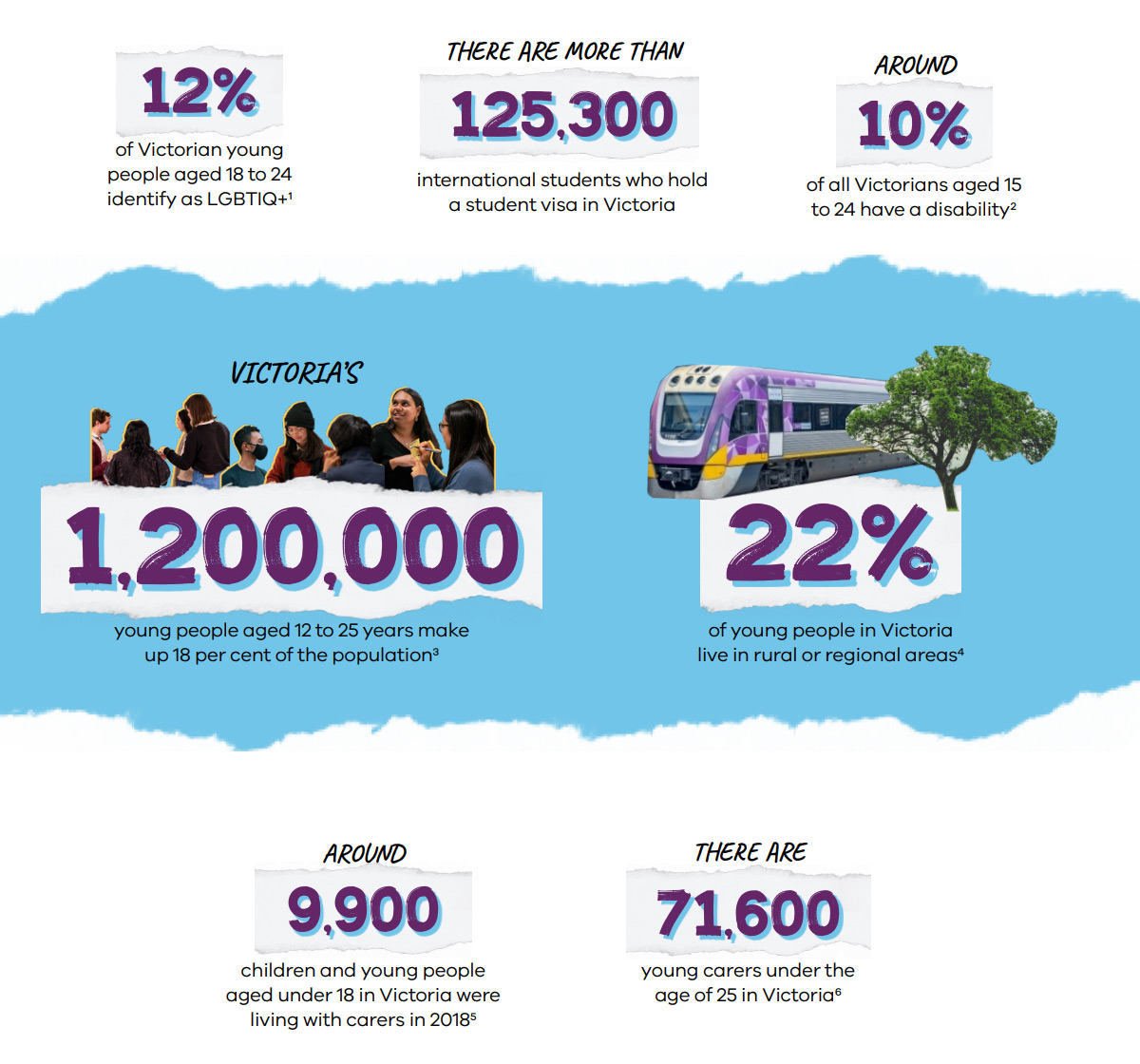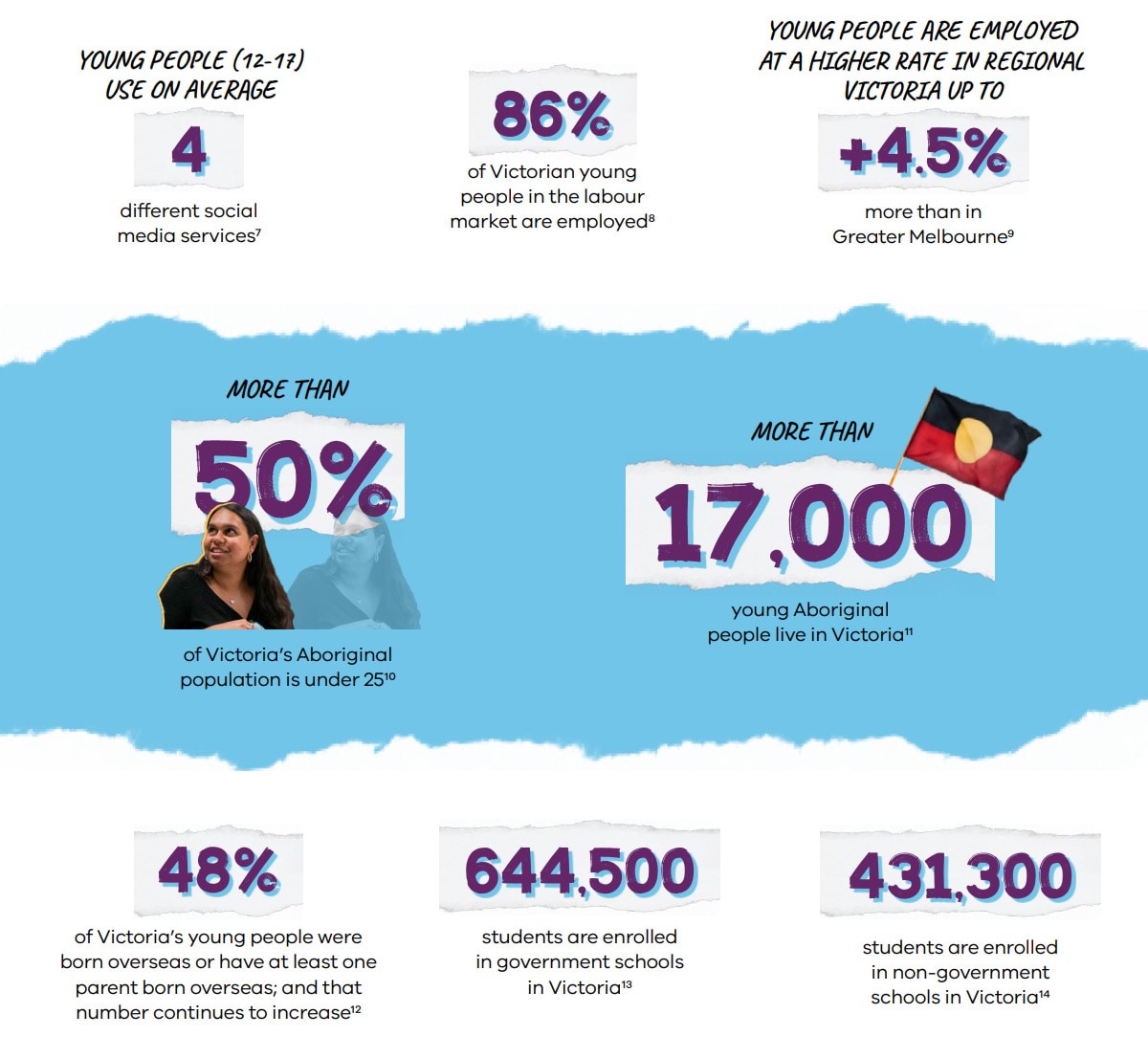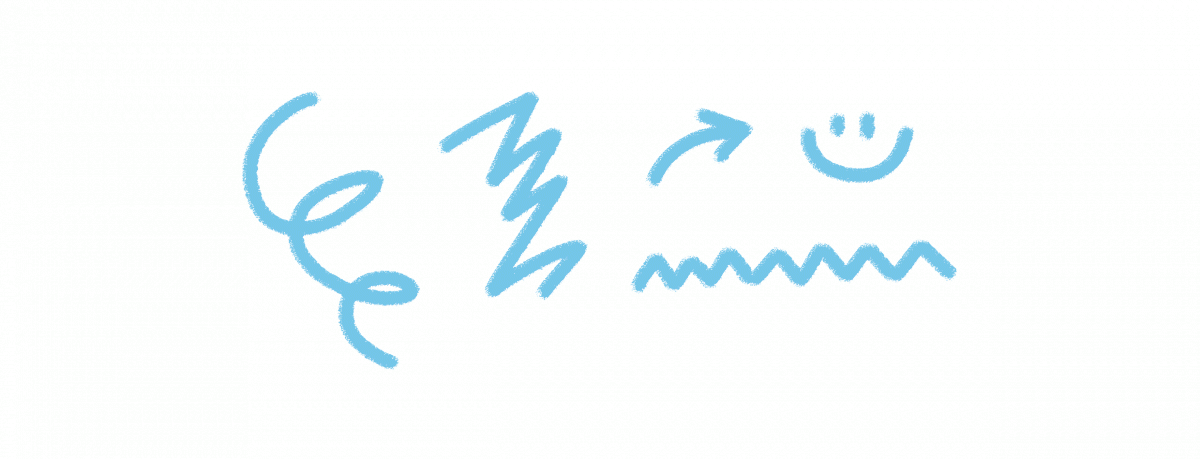
Method
The first step in developing the strategy was hearing from Victorian young people and community members about what matters to them, some of the issues they face and potential solutions. This included:
-
Almost 30 online discussions involving young Victorians, including Aboriginal young people, disabled young people, LGBTIQ+ young people, young women and girls, Pasifika young people, refugee and migrant young people, and young people in youth justice centres.
-
1,100 survey responses from young people and community members.
-
Written input from almost 120 young people, organisations and businesses outlining their priorities and ideas for the strategy.
-
Detailed conversations involving Members of Parliament and young people focussing on specific areas that needed to be explored further, like housing, transport and family violence.
-
More than 100 personal stories submitted through TikTok.
The Victorian Government used this information to help shape the strategy and develop our commitments to young people.
Victorian Youth Stats
The Victorian Government used this information to help shape the strategy and develop our commitments to young people.


View the Youth Strategy
In this report…
Glossary
LGBTIQ+:
- Lesbian: used to describe a person who identifies as a girl or woman who is attracted to someone of the same identified gender.
- Gay: most commonly used to described someone who is attracted to someone of the same identified gender.
- Bisexual: an attraction to someone of the same gender and other genders. Everyone’s experience is a little different, and bi doesn't necessarily mean being attracted to only two genders.
- Transgender: sometimes gender diverse people feel that their gender doesn’t match the sex they were assigned at birth (for example, someone born with a penis might identify as a girl)–this is referred to as being transgender. Sometimes trans people change their name, their clothes, or even their bodies. Sometimes they don’t.
- Intersex: people are born with different kinds of bodies. People who are intersex are born with natural variations in their body that differ from what we might expect to be ‘typically’ male/female. This can include (but is not limited to) variations in hormones, chromosomes and sexual organs.
- Queer: a common umbrella term used to mean anyone who is same-gender attracted or gender diverse.
- Questioning: most people will question their sexual or gender identity at some point throughout their life. It can be a confusing time, but it is also normal.
- +: used to describe communities outside heteronormative and cisgender identities that fall under the queer umbrella.

